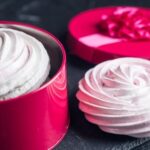Are you looking to learn how to make and decorate a cake with fondant? Fondant is a versatile sugar paste that allows for endless creative possibilities when it comes to cake decorating. In this article, we will guide you through the process of working with fondant, from essential tools and materials to troubleshooting common issues that may arise.
Fondant is a smooth icing made from sugar, water, and gelatin or agar. It is commonly used in cake decorating to create a flawless finish and intricate designs. Fondant provides a clean canvas for decorations and allows for precise sculpting, making it a favorite among professional bakers and home decorators alike.
Before diving into the world of fondant, it’s important to understand the basics of this sugar paste and why it is favored in cake decorating. With the right tools, materials, and techniques at your disposal, you’ll be able to create stunning cakes that are sure to impress any audience. Let’s explore the art of working with fondant and discover how you can elevate your baking skills to new heights.
Essential Tools and Materials
When it comes to working with fondant, having the right tools and materials is essential to ensure a successful cake decorating experience. Here is a detailed list of everything you will need to work with fondant:
1. Rolling Pin: A large, sturdy rolling pin is crucial for rolling out the fondant smoothly and evenly.
2. Fondant Smoother: This tool helps in smoothing out the fondant on the cake’s surface and edges.
3. Fondant Mat: A non-stick silicone mat or vinyl mat is ideal for rolling out the fondant without sticking.
4. Sharp Knife or Pizza Cutter: For trimming excess fondant and creating clean edges on the cake.
5. Fondant Cutters: These come in various shapes and sizes to create different designs and decorations on the cake.
6. Cornstarch or Powdered Sugar: To prevent sticking when working with fondant and rolling it out.
7. Edible Food Colors: Gel-based food colors are best for tinting fondant without affecting its consistency.
8. Piping Gel or Water: Used as glue to attach fondant decorations to the cake.
Now that you have all your tools and materials ready, you can start your journey on how to make and decorate a cake with fondant. Getting familiar with these essential items will make your cake decorating process much smoother and enjoyable. Remember, practice makes perfect when it comes to working with fondant, so don’t be afraid to experiment and try out new techniques.
Preparing the Cake
Before you start working with fondant to create a beautifully decorated cake, it is essential to properly prepare the cake itself. Here are some tips and techniques to ensure that your cake is ready for fondant application:
- Ensure that your cake is completely cooled before applying fondant. Warm cakes can cause the fondant to become sticky and difficult to work with.
- Level the top of your cake using a serrated knife or a cake leveler to create a flat surface for the fondant to adhere to.
- Brush off any loose crumbs on the surface of the cake and apply a thin layer of buttercream or ganache as a crumb coat. This will help the fondant stick to the cake more easily.
To create a flawless base for your fondant decoration, it is important to take the time to properly prepare your cake in advance. This will ensure that your final product not only looks stunning but also tastes delicious once completed.
After following these preparation techniques, you are now ready to move on to the next steps in creating and decorating a cake with fondant. It is crucial to have a well-prepared canvas before moving on to applying and molding the fondant onto your cake. With these tips in mind, you’ll be well-equipped to tackle the challenges of working with this versatile decorating medium and creating gorgeous, professional-looking cakes at home.
Making the Fondant
Fondant is a versatile and popular choice for cake decorating due to its smooth, elegant finish. Making your own fondant from scratch may seem like a daunting task, but it can be a rewarding experience that allows for customization and control over the final product. Here is a step-by-step guide on how to make fondant from scratch:
- Gather Your Ingredients: To make fondant from scratch, you will need confectioners’ sugar (powdered sugar), gelatin, water, corn syrup, glycerin, and flavoring (such as vanilla extract).
- Prepare the Gelatin Mixture: Start by blooming the gelatin in water according to the package instructions. Heat the mixture until the gelatin is fully dissolved and set it aside to cool slightly.
- Mix the Fondant: In a large bowl, combine the confectioners’ sugar, corn syrup, glycerin, and flavoring. Add the gelatin mixture and mix until a sticky dough forms.
Once you have combined all the ingredients and formed a sticky dough, you can begin kneading it on a clean work surface dusted with powdered sugar. Continue kneading until the fondant becomes smooth and pliable. Remember to store any unused fondant in an airtight container to prevent it from drying out.
With these step-by-step instructions on how to make fondant from scratch, you can customize the flavor and color of your fondant for unique cake decorating projects. Experiment with different flavors or add food coloring to achieve vibrant hues. Making your own fondant allows for creative freedom and ensures that your cakes stand out with a professional-looking finish.
Rolling Out the Fondant
Rolling out fondant and covering a cake smoothly is a crucial step in the process of decorating a cake with fondant. Before rolling out the fondant, it is essential to ensure that the cake is properly prepared. The cake should be levelled and covered with a thin layer of frosting to help the fondant adhere to the surface. It is also recommended to chill the frosted cake in the refrigerator for about 15-20 minutes before applying the fondant.
To begin rolling out the fondant, dust your work surface with powdered sugar or cornstarch to prevent sticking. Knead the fondant until it is pliable and roll it out with a rolling pin into a circular shape, slightly larger than the size of your cake.
Gently lift the rolled-out fondant using a rolling pin or your hands and carefully drape it over the chilled cake. Smooth out any wrinkles or air bubbles by gently working from the center towards the edges, using a fondant smoother or your hands.
Once you have successfully covered your cake with fondant, you can then start decorating it according to your desired design. From simple patterns and textures to intricate shapes and figures, there are endless possibilities when it comes to decorating a cake with fondant. You can use various tools like cutters, molds, and impression mats to create unique decorations. Remember to have fun and let your creativity flow while decorating your fondant-covered cake.
Decorating Techniques
Fondant is a versatile and popular choice for decorating cakes due to its smooth finish and ability to be shaped into intricate designs. When it comes to decorating a cake with fondant, the possibilities are endless. From simple patterns and textures to elaborate sculpted figures and flowers, fondant allows you to unleash your creativity and personalize your cake design. Here are some creative ideas and techniques to enhance your fondant-decorated cake:
One of the most common ways to decorate a cake with fondant is by using cut-out shapes. You can use cookie cutters or specialized fondant cutters to create various shapes like hearts, stars, or even letters to spell out a message on the cake. These shapes can be arranged in patterns, borders, or scattered randomly on the cake for a fun and festive look.
Another popular technique for fondant decoration is embossing. By using textured rolling pins or embossing mats, you can imprint intricate designs onto the fondant surface before applying it to the cake. This adds depth and visual interest to the cake, making it look more professional and visually appealing.
For those looking for a more advanced decorating technique, sculpting with fondant offers endless possibilities. You can create 3D figures, animals, or even entire scenes on top of the cake using sculpting tools and edible food coloring. Whether you want to make a whimsical character or replicate a realistic object, sculpting with fondant allows you to bring your imagination to life on a delicious canvas.
| Technique | Description |
|---|---|
| Cut-Out Shapes | Use cookie cutters or specialized fondant cutters to create shapes for patterns or messages. |
| Embossing | Texture rolling pins or embossing mats can create intricate designs on the fondant surface. |
| Sculpting | Create 3D figures or scenes using sculpting tools and edible food coloring. |
Troubleshooting
Working with fondant can be a fun and rewarding experience, but it’s not without its challenges. In this section, we will address some common issues that may arise while working with fondant and provide tips on how to fix them. By being prepared for these potential problems, you can ensure that your cake decorating project goes smoothly and successfully.
Cracking or Tearing
One of the most frustrating issues that can occur when working with fondant is cracking or tearing. This can happen when the fondant is too dry or if it has been rolled out too thin.
To prevent cracking, make sure to knead the fondant well before rolling it out and use a small amount of vegetable shortening or cornstarch to keep it pliable. If you do notice cracks or tears in the fondant as you’re working with it, try gently smoothing them out with your fingers or using a small amount of water to help stick the pieces back together.
Air Bubbles
Air bubbles are another common problem when working with fondant, especially when covering a cake. To prevent air bubbles from forming, make sure to roll out the fondant slowly and evenly, applying gentle pressure as you go. If you do end up with air bubbles under the fondant, use a sharp pin to carefully prick the bubble and then smooth it out gently with your fingers. Be careful not to puncture the cake itself while doing this.
Fondant Elephant Skin
“Elephant skin,” also known as wrinkling or sagging, can occur when the fondant is too thick or if too much moisture gets trapped underneath it. To avoid this issue, roll out the fondant to an even thickness and make sure that the surface of the cake is completely smooth before applying the fondant.
If you do notice wrinkles forming on the surface of your cake after applying the fondant, gently smooth them out by using a fondant smoother or by lightly rubbing the surface with your hands in a circular motion.
Storage and Preservation
When it comes to storing fondant-covered cakes and preserving them for longer periods, there are a few key tips and techniques to keep in mind. Proper storage is crucial to maintaining the freshness and quality of your beautifully decorated cake. Here are some useful guidelines on how to store fondant-covered cakes effectively:
Storage Guidelines
After completing the decoration of your cake with fondant, it is essential to store it correctly to prevent drying out or damage. To start, make sure your cake is placed in a cool, dry place away from direct sunlight.
Avoid storing it in areas that are too humid or too hot, as this can cause the fondant to become sticky or lose its shape. If you have a cake container or a cake box, these can be ideal options for storing your fondant-covered masterpiece.
Preservation Techniques
If you need to preserve your fondant-covered cake for an extended period, there are a few techniques you can use to keep it fresh and intact. One popular method is freezing the cake: simply wrap the entire cake tightly with plastic wrap and aluminum foil before placing it in the freezer.
When you’re ready to enjoy the cake, allow it to thaw slowly in the refrigerator before bringing it back to room temperature. This method helps retain the moisture and texture of the fondant while keeping the decorations intact.
Additional Tips
To ensure that your fondant-covered cake stays looking its best, consider adding a layer of edible glaze spray over the decorations before storing it. This can help protect the colors and prevent any dust or debris from settling on the surface of the cake.
Additionally, if you need to transport the cake, make sure it is placed on a sturdy base and secured properly to prevent any shifting or damage during transit. By following these storage and preservation tips, you can enjoy your beautifully decorated fondant-covered cakes for days or even weeks after they are made.
Conclusion
In conclusion, mastering the art of working with fondant can open up a whole new world of creative possibilities in cake decorating. By learning how to make and decorate a cake with fondant, you can elevate your baking skills and impress your friends and family with beautifully designed cakes for any occasion. With the right tools, materials, and techniques, you can achieve professional-looking results right in your own kitchen.
Remember, the key to success when working with fondant lies in proper preparation and attention to detail. From preparing the cake base correctly to rolling out the fondant smoothly and applying creative decorating techniques, each step plays a crucial role in achieving a stunning final product. Don’t be discouraged by any challenges that may arise along the way – instead, use them as learning opportunities to improve your skills.
So why not give it a try? Experiment with different colors, shapes, and designs to create unique and personalized cakes that will surely leave a lasting impression on your guests.
With practice and patience, you’ll soon become more confident in using fondant as a versatile medium for expressing your creativity in the world of cake decorating. So go ahead, have fun, and let your imagination run wild as you embark on this delightful journey of making and decorating cakes with fondant.
Frequently Asked Questions
How Do You Put Fondant on a Cake for Beginners?
Putting fondant on a cake for beginners can be a bit tricky, but with some practice, it becomes easier. The key is to roll out the fondant to the right thickness, and then carefully drape it over the cake. Smooth out any wrinkles or air bubbles using a fondant smoother or your hands.
Trim off any excess fondant at the bottom and voila! Your cake is covered with fondant.
How Do You Get Fondant Decorations to Stick to a Cake?
Getting fondant decorations to stick to a cake requires some adhesive. You can use water, piping gel, or even melted chocolate as glue for your fondant decorations. Apply a small amount of the adhesive onto the back of the decoration before gently pressing it onto the cake. Make sure to press down firmly to ensure it sticks securely.
How to Make Fondant to Decorate a Cake?
Making fondant from scratch to decorate a cake is not as difficult as it may seem. Start by melting marshmallows in the microwave or on the stovetop, then mix in powdered sugar until it forms a dough-like consistency.
Knead the fondant until smooth and elastic, adding more powdered sugar if needed to prevent sticking. Store leftovers in an airtight container for future use in decorating cakes.

Welcome to my blog about home and family. This blog is a place where I will share my thoughts, ideas, and experiences related to these important topics. I am a stay-at-home mom with two young children. I hope you enjoy reading it! and may find some helpful tips and ideas that will make your home and family life even better!





